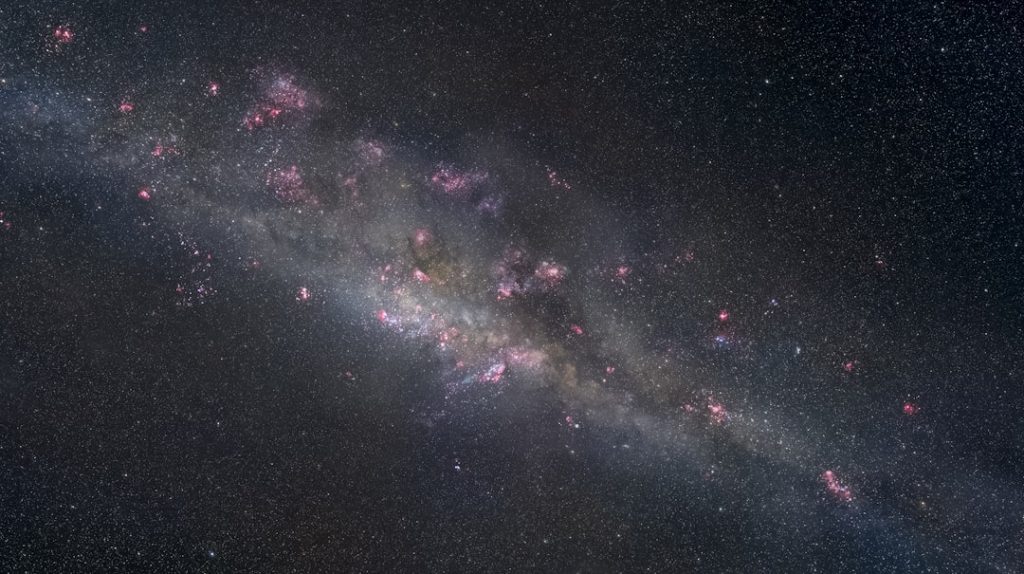The James Webb Space Telescope (JWST) represents a monumental leap in our quest to understand the universe. Launched on December 25, 2021, this sophisticated observatory is often heralded as the successor to the Hubble Space Telescope, which has provided invaluable insights into the cosmos since its launch in 1990. Unlike Hubble, which primarily observes in the visible and ultraviolet wavelengths, JWST is designed to operate predominantly in the infrared spectrum.
This capability allows it to peer through cosmic dust clouds and observe celestial phenomena that are otherwise obscured from view. The telescope’s design and technology reflect decades of advancements in space science and engineering, making it one of the most ambitious projects ever undertaken in the field of astronomy. The JWST is not merely an upgrade; it is a paradigm shift in how we explore the universe.
With its larger mirror—measuring 6.5 meters in diameter compared to Hubble’s 2.4 meters—JWST can collect more light, enabling it to observe fainter and more distant objects. This enhanced sensitivity opens new avenues for exploration, allowing scientists to study the formation of stars and galaxies, the atmospheres of exoplanets, and even the origins of life itself. As we embark on this new era of astronomical discovery, the JWST stands poised to answer some of humanity’s most profound questions about our place in the cosmos.
Key Takeaways
- The James Webb Space Telescope is the most powerful space telescope ever built, set to launch in 2021.
- The Webb Telescope uses advanced technology such as a large segmented mirror and infrared instruments to study the universe.
- The mission of the Webb Telescope is to explore the formation of galaxies, stars, and planets, and to search for signs of life in other solar systems.
- The Webb Telescope has the potential to make groundbreaking discoveries, such as finding the first galaxies or studying the atmospheres of exoplanets.
- Challenges and risks of the Webb Telescope mission include the complexity of deployment and potential technical issues in space.
The Technology Behind the Webb Telescope
At the heart of the JWST’s capabilities lies its innovative technology, which has been meticulously engineered to withstand the harsh conditions of space while delivering unparalleled observational power. The telescope’s primary mirror is composed of 18 hexagonal segments made from beryllium and coated with a thin layer of gold. This design not only maximizes light collection but also ensures that the mirror remains lightweight and structurally sound in the vacuum of space.
Each segment can be adjusted independently, allowing for precise alignment and calibration, which is crucial for achieving high-resolution images. In addition to its impressive mirror, JWST is equipped with a suite of advanced scientific instruments that enable a wide range of observations. The Near Infrared Camera (NIRCam) captures images in the near-infrared spectrum, while the Mid-Infrared Instrument (MIRI) extends this capability into longer wavelengths.
These instruments are designed to work together seamlessly, providing a comprehensive view of astronomical phenomena. Furthermore, JWST’s sunshield—a five-layer structure roughly the size of a tennis court—protects its sensitive instruments from solar radiation and helps maintain the extremely low temperatures necessary for infrared observations. This combination of cutting-edge technology ensures that JWST can operate effectively in its unique orbital position at the second Lagrange point (L2), approximately 1.5 million kilometers from Earth.
The Mission and Goals of the Webb Telescope

The mission of the James Webb Space Telescope is multifaceted, encompassing a wide array of scientific objectives that aim to deepen our understanding of the universe. One of its primary goals is to investigate the formation and evolution of galaxies over cosmic time. By observing distant galaxies as they were billions of years ago, astronomers hope to uncover how these massive structures formed and evolved into the galaxies we see today.
This research could provide critical insights into dark matter and dark energy, two enigmatic components that dominate our universe yet remain poorly understood. Another significant aspect of JWST’s mission is its focus on star formation and planetary systems. The telescope will study regions where stars are born, such as molecular clouds, to understand the processes that lead to star formation and the subsequent development of planetary systems.
Additionally, JWST aims to analyze the atmospheres of exoplanets—planets orbiting stars outside our solar system—to search for signs of habitability or even life. By examining chemical signatures in these atmospheres, scientists hope to identify potential biosignatures that could indicate the presence of life beyond Earth. This ambitious goal places JWST at the forefront of astrobiology and planetary science.
The Potential Discoveries and Contributions of the Webb Telescope
| Category | Details |
|---|---|
| Discoveries | Exoplanets, galaxies, black holes, and more |
| Contributions | Understanding the early universe, formation of stars and galaxies, and potential for finding life beyond Earth |
| Technology | Advanced infrared technology for clearer and deeper images |
| Impact | Revolutionizing our understanding of the cosmos and our place within it |
The potential discoveries enabled by the James Webb Space Telescope are vast and varied, promising to reshape our understanding of fundamental astrophysical processes. One area where JWST is expected to make significant contributions is in the study of the early universe. By observing light from some of the first galaxies formed after the Big Bang, astronomers can gain insights into cosmic reionization—a period when neutral hydrogen in the universe became ionized due to intense radiation from newly formed stars and galaxies.
Understanding this epoch is crucial for piecing together the timeline of cosmic evolution. Moreover, JWST’s ability to observe exoplanets will likely revolutionize our understanding of planetary systems beyond our own. The telescope’s advanced spectroscopic capabilities will allow scientists to analyze light passing through an exoplanet’s atmosphere during transits—when a planet passes in front of its host star from our perspective on Earth.
This technique can reveal information about atmospheric composition, temperature, and even weather patterns on distant worlds. Such discoveries could lead to groundbreaking insights into whether these planets could support life or possess conditions similar to those on Earth.
Challenges and Risks of the Webb Telescope Mission
Despite its groundbreaking potential, the James Webb Space Telescope mission is not without challenges and risks. The complexity of its design and technology means that any failure at critical stages could jeopardize its scientific objectives. For instance, deploying its sunshield and mirror segments required precise engineering and coordination; any misalignment or malfunction during these processes could have rendered the telescope ineffective.
The successful deployment was a testament to years of rigorous testing and planning, but it also highlighted the inherent risks associated with such an ambitious project. Additionally, operating JWST at L2 presents unique challenges related to communication and data transmission. While this location offers a stable environment for observations, it also means that data must be transmitted over long distances back to Earth.
This latency can complicate real-time operations and necessitates careful planning for data collection and analysis. Furthermore, as with any space mission, there are concerns about micrometeoroid impacts or other unforeseen events that could damage sensitive instruments or disrupt operations. Addressing these risks requires ongoing vigilance and adaptability from mission operators.
Collaborations and Partnerships in the Webb Telescope Project

The James Webb Space Telescope is a product of extensive collaboration among various organizations and countries, showcasing a remarkable example of international cooperation in science and technology. NASA leads the project, but it is joined by significant contributions from the European Space Agency (ESA) and the Canadian Space Agency (CSA). This partnership has allowed for a pooling of resources, expertise, and technology that has been crucial for overcoming challenges throughout the development process.
The collaborative nature of JWST extends beyond governmental agencies; numerous academic institutions and private companies have also played vital roles in its development. For instance, many universities contributed to instrument design and testing, while private contractors manufactured components essential for telescope assembly. This broad network of collaboration not only enhances scientific output but also fosters innovation by bringing together diverse perspectives and expertise from around the globe.
The Impact of the Webb Telescope on Space Exploration
The James Webb Space Telescope is poised to have a profound impact on space exploration by redefining our understanding of fundamental astrophysical concepts and inspiring future generations of scientists and engineers. Its ability to observe distant galaxies, stars, and planetary systems will provide invaluable data that can inform future missions aimed at exploring our solar system and beyond. For example, insights gained from studying exoplanet atmospheres could guide future missions designed specifically for astrobiological exploration.
Moreover, JWST serves as a powerful tool for education and public engagement in science. By capturing stunning images and revealing new discoveries about our universe, it has the potential to ignite interest in astronomy among people worldwide. Educational programs associated with JWST aim to engage students in STEM fields by providing them with access to real-time data and findings from the telescope’s observations.
This outreach not only fosters a deeper appreciation for science but also encourages young minds to pursue careers in research and exploration.
The Future of Space Exploration with the Webb Telescope
As we look ahead, the James Webb Space Telescope stands as a beacon for future space exploration endeavors. Its groundbreaking observations will likely lay the groundwork for subsequent missions aimed at further unraveling cosmic mysteries. For instance, findings related to galaxy formation may inform designs for next-generation telescopes or space missions focused on studying dark matter or dark energy more directly.
Furthermore, JWST’s success could pave the way for more ambitious projects beyond our current capabilities. Concepts such as space-based observatories capable of detecting biosignatures on Earth-like exoplanets or missions designed to explore icy moons within our solar system may become more feasible as we learn from JWST’s operations and discoveries. The knowledge gained from this mission will undoubtedly influence how we approach future explorations, ensuring that humanity continues its journey into the cosmos with curiosity and determination.
In summary, while challenges remain, the James Webb Space Telescope represents a significant milestone in our quest for knowledge about the universe. Its advanced technology, collaborative spirit, and ambitious mission objectives position it as a transformative force in astronomy that will shape our understanding for decades to come.


